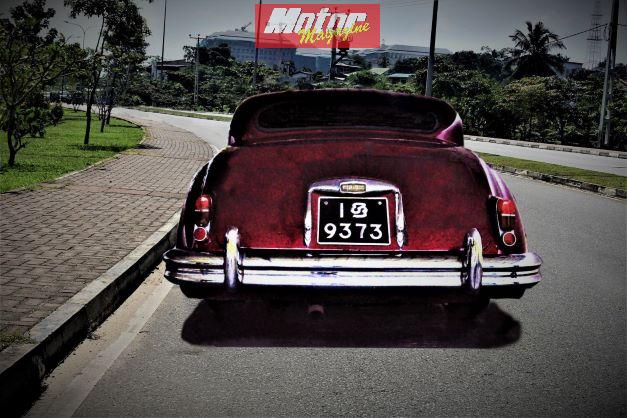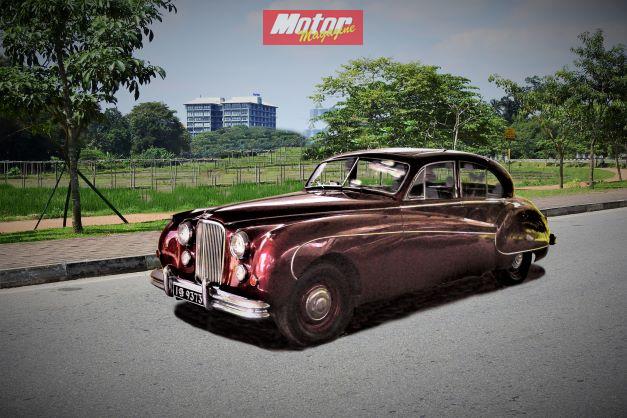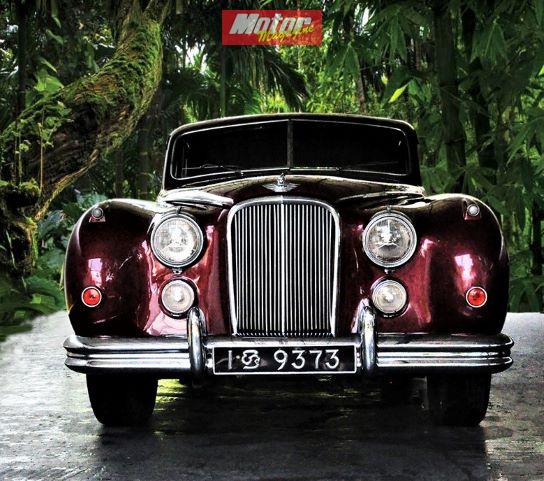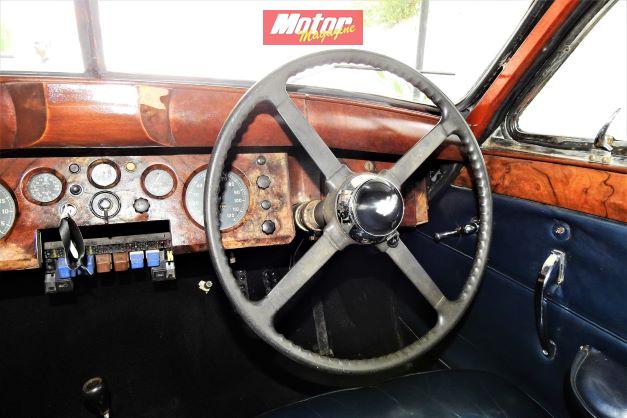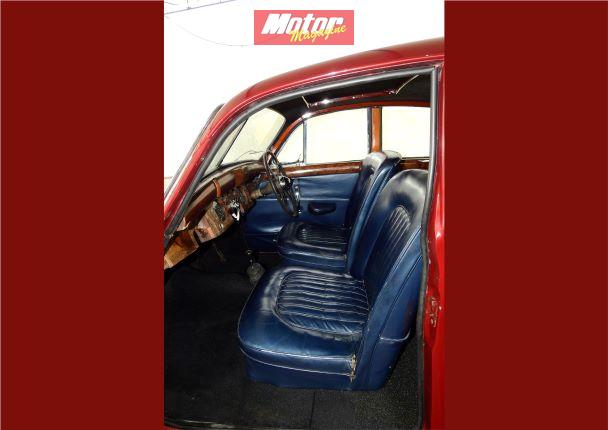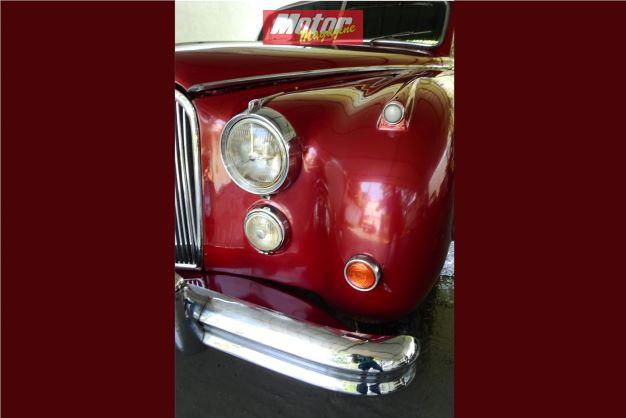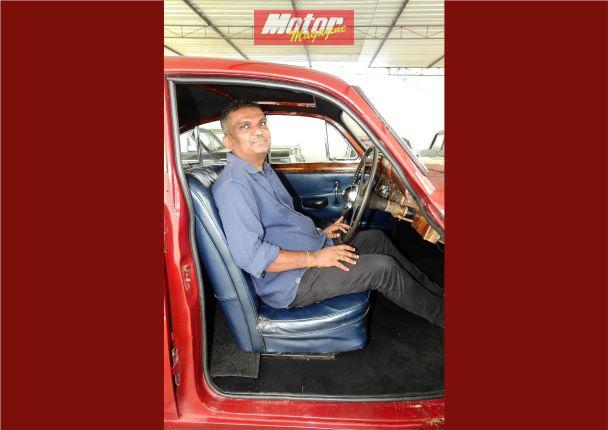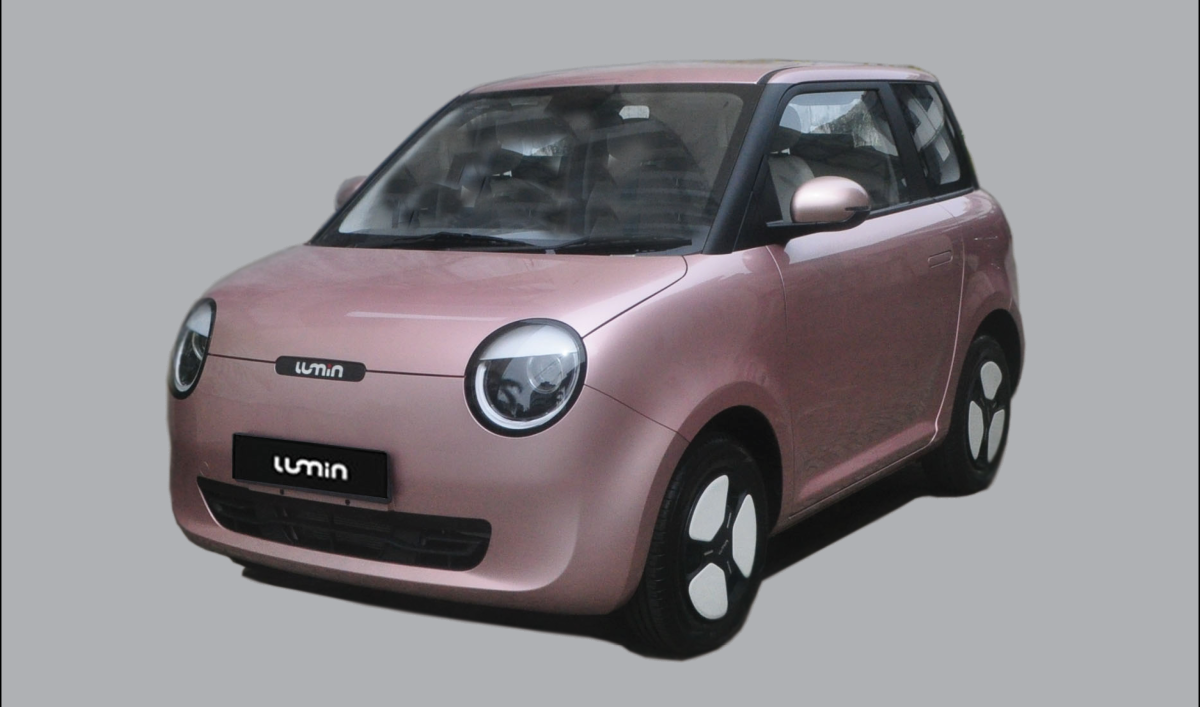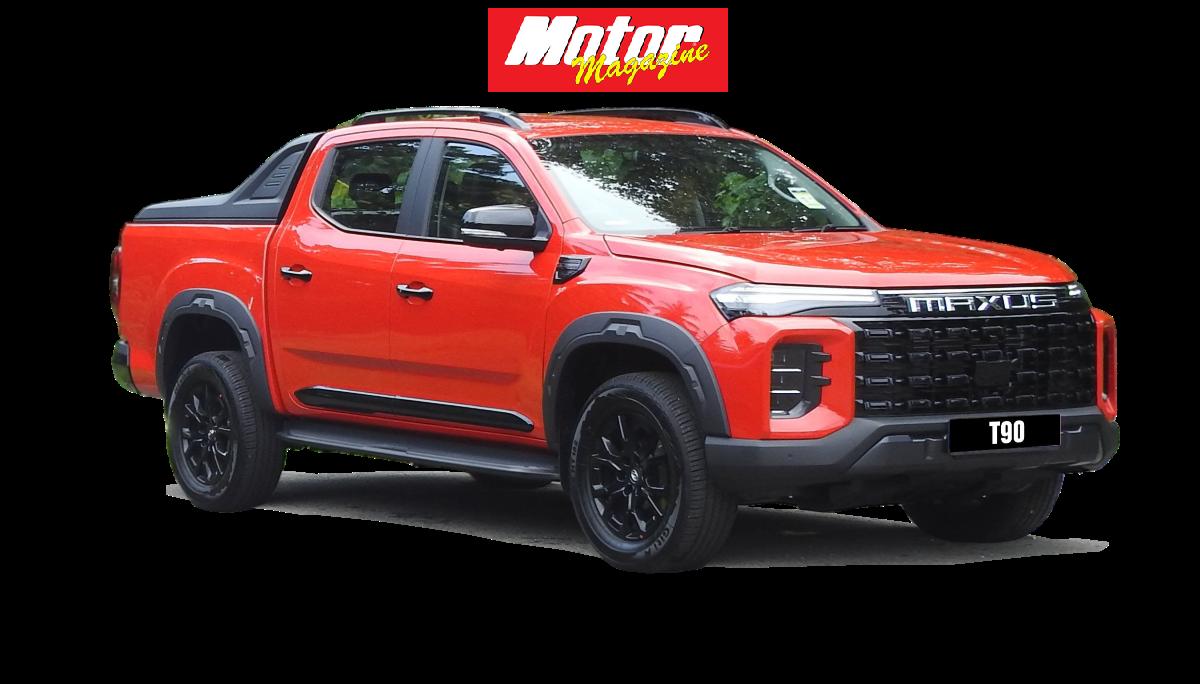Jaguar’s long line-up of full-size British luxury sedans saw the Mark VII serve between 1950 and 1956 as the brand’s pinnacle four-door offering. Interestingly, Bentley already had a Mark VI model on the market, so Jaguar simply skipped from Mark V to Mark VII, and coming in at a smidge under 5 metres in length, the Mark VII represented the Jag for the well-heeled in the Fifties.
Packing a 3.4 litre variant of Jaguar’s long-running XK series of engines, the Mark VII would be the first Jag to be offered with an automatic transmission option. The 3,442cc in-line six featured double overhead camshafts and twin carburettors, and put out 160hp to the rear wheels, enabling a top speed of 163km/h (101mph) to be achieved if one was brave enough.
However,
in 1954, Jaguar would reveal the Mark VII M which brought higher-lift cams to
the engine. The result was a liberation of a further 30hp, bringing output to
190hp and raising the top speed to 164km/h (104mph). The Mark VII M also saw a
slight weight gain, from 1,676kg to 1,689kg, and some design changes. The
gearbox remained a four-speed manual but was constant mesh and featured closer
ratios.
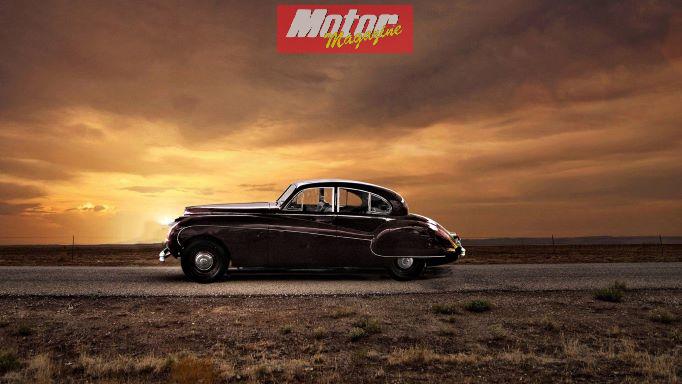
A total of 30,969 cars were produced, and this is one of a known handful that came to Sri Lanka. It’s in the custody of Dinesh Hensman who has spent over a decade and a seven-figure sum to bring the car up to this level, as one would expect with a classic British car. While there are a few minor things to attend to, this big cat is ready to hit the road again, but Dinesh wants to do some more work on the brakes before taking her on longer trips. “It’s a swift thing” he says. “It really pulls and pulls some more, so if the brakes are not in top form, it can become frightening to drive”.
The
interior features the typical Fifties luxury British car theme, with plush
leather seats and wood-trimmed dash. The gauges are arranged in a pod right in
the centre, and the rev counter sweeps anticlockwise. A few switches and
buttons, and that’s it really. If you want air conditioning, hand-crank a
window down or open the sunroof. If you want infotainment, sing it yourself,
bring along a portable speaker, or have a conversation with others if you’re
not motoring alone. The rear leather upholstered bench is very plush, and you
just sink into it, almost like you’re being swallowed. However, rear legroom is
surprisingly less than you’d expect on a full-size luxury car. Headroom is
ample, which it should be, as the Fifties were the time of hats.
Other interesting quirks include the four-spoke steering wheel which has a hint of nautical design about it, and the placement of the pedals, which sees the throttle sited much lower than the clutch and brake. One can only speculate the reason for this, as there didn’t seem to be much information online, and I highly doubt you’d be looking to heel-and-toe in a wallowy Fifties luxobarge. The headlamp dip switch also lives on the floor, to the left of the clutch pedal.
The boot is decently spacious for the period, and it’s interesting to note that the fuel filler cap lives inside the boot, and you need to open the boot in order to pump fuel. The spare wheel also takes up some space, but remember that this was a time when people didn’t carry nearly as much luggage as they do now.
